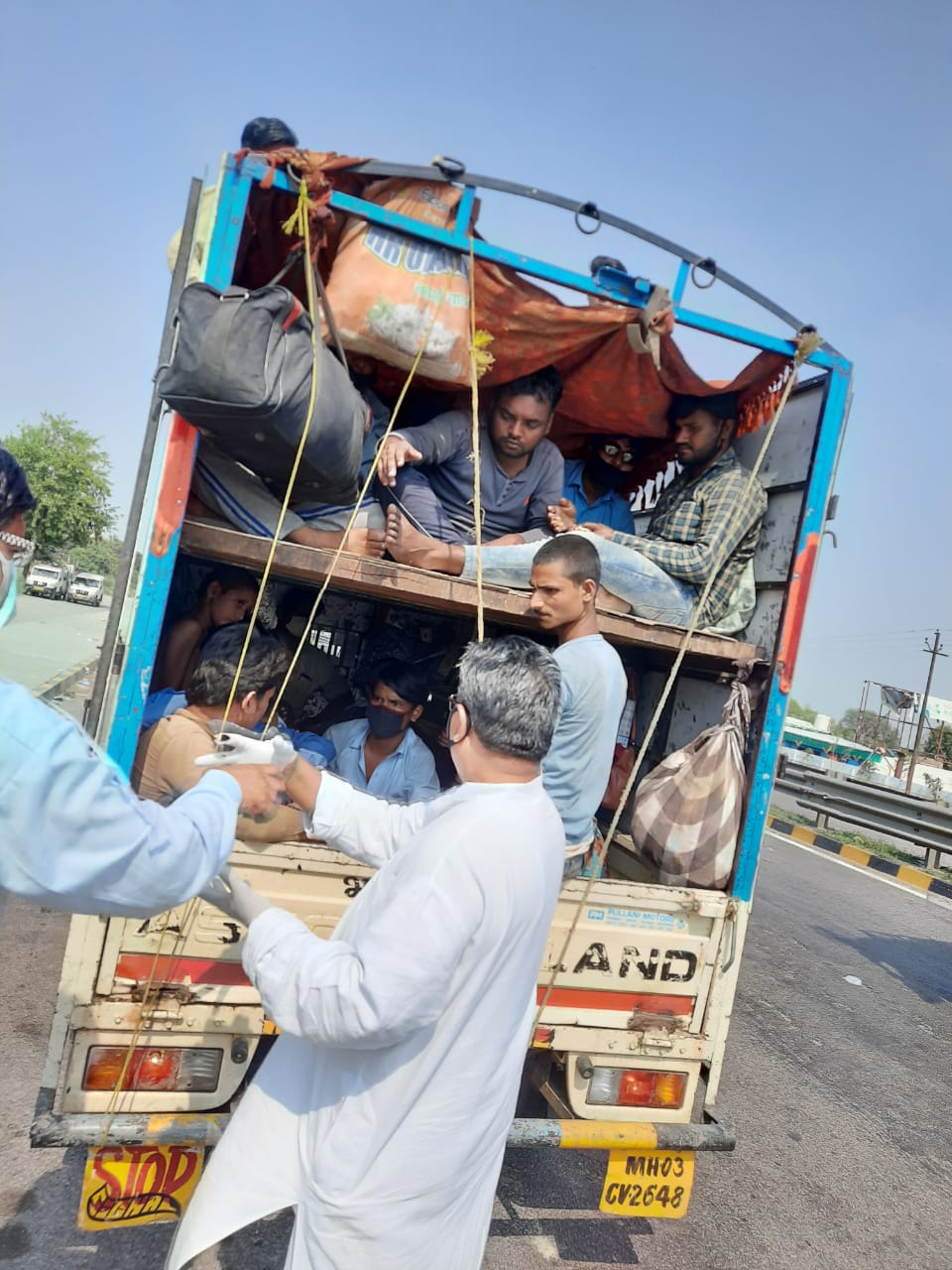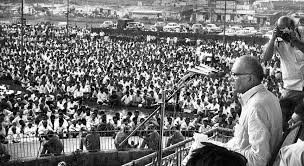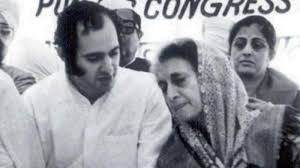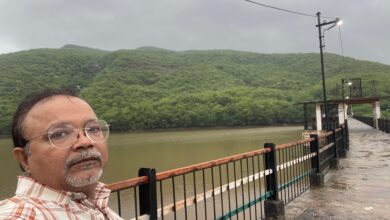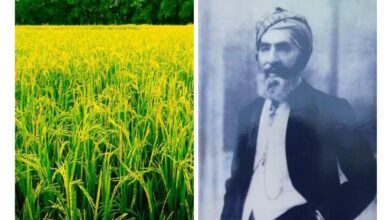देहात में कोरोना फैलने के लिए एकतरफ़ा और कठोर लॉक डाउन ज़िम्मेदार
डाक्टर संगठनों ने सार्वजनिक स्वास्थ्य आयोग बनाने की माँग की
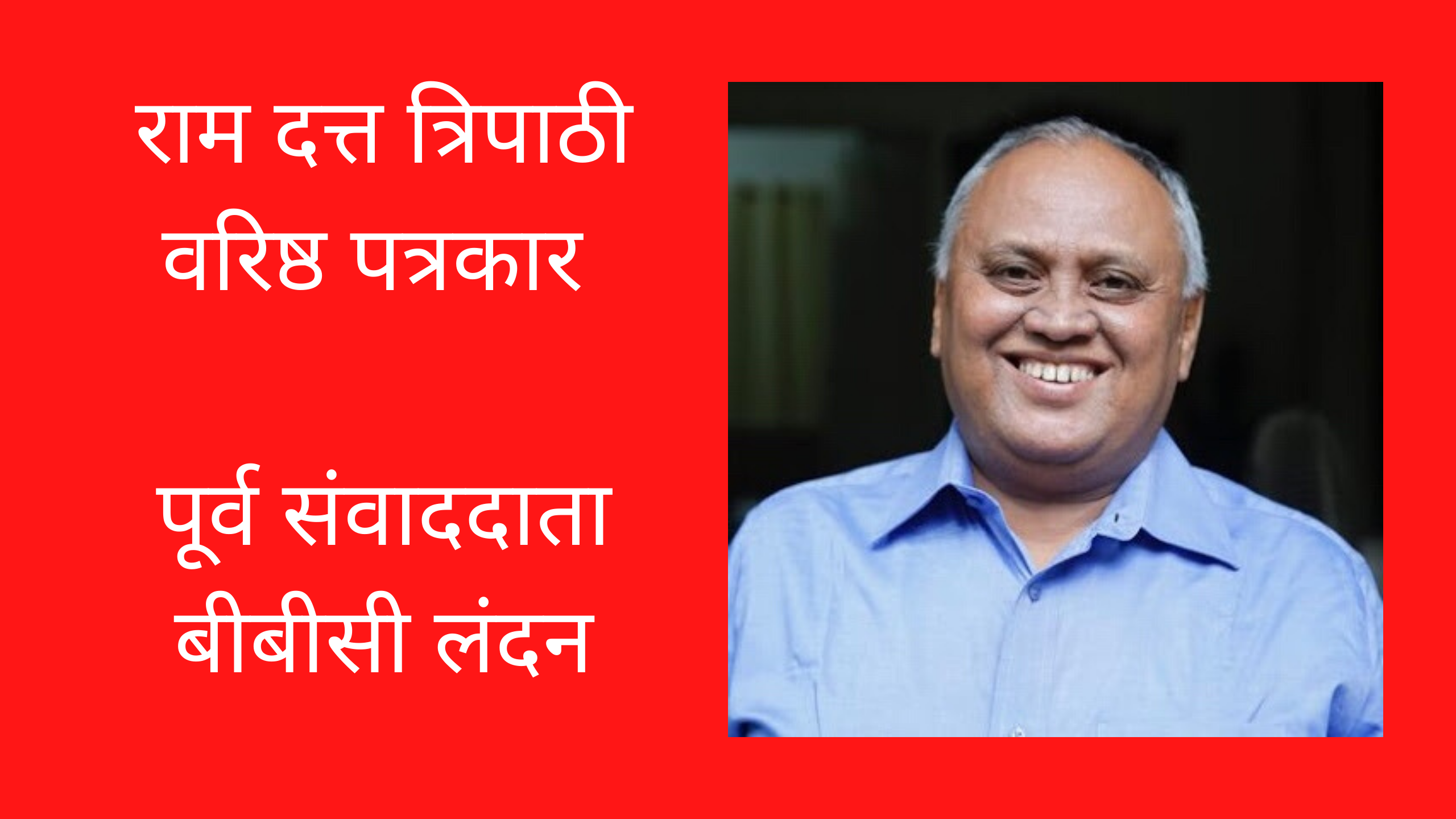
भारत के ग्रामीण और क़स्बाई इलाक़ों में Covid_19 कोविड 19 महामारी फैलने के लिए सिर्फ़ और सिर्फ़ केंद्र सरकार के एकतरफ़ा निर्णय ज़िम्मेदार है. अगर लम्बे Lockdown से पहले प्रवासी कामगारों को उनके घर गाँव जाने दिया गया होता तो यह स्थिति नहीं आती. देश में डाक्टरों की तीन बड़ी संस्थाओं ने प्रधानमंत्री नरेंद्र मोदी को सम्बोधित संयुक्त पत्र में यह बातें कही हैं. पत्र में तत्काल सार्वजनिक स्वास्थ्य आयोग बनाने पर बल दिया गया है और बीमारी की रोकथाम के लिए विशेषज्ञों को शामिल करने समेत कई ठोस सुझाव दिये गये हैं .साथ ही समस्त मानव समुदाय को चेतावनी भी कि प्रकृति की चेतावनी के संकेतों पर ध्यान दें , समस्त जीव जंतुओं के कल्याण का ध्यान रखें , अपने रहन सहन और स्वास्थ्य संबंधी नीतियों में बदलाव लायें , अन्यथा भविष्य में और भी ख़तरनाक बीमारी आने वाली हैं .
यह तीन संस्थाएं हैं इंडियन पब्लिक हेल्थ एसोसिएशन IPHA , इंडियन एसोसिएशन ऑफ़ प्रिवेंटिव ऐंड सोशल मैडिसन IAPSM और इंडियन एसोसिएशन ऑफ़ एपिडेमिलॉजिस्ट्स IAE . इनके सदस्यों के नाम और पूरी रिपोर्ट के अंत में दी जा रही है.
(Joint Report : Indian Public Health Association (IPHA),Indian Association of Preventive and Social Medicine (IAPSM) & Indian Association of Epidemiologists (IAE) : Joint COVID-19 Task Force)
इन तीनों संस्थाओं ने प्रधानमंत्री को लिखे एक संयुक्त पत्र में कहा है कि यदि देश व्यापी कठोर लॉक डाउन लागू करने से पहले महानगरों में काम करने वाले श्रमिकों को उनके घर जाने दिया गया होता तो आज यह नौबत नहीं आती . इस पत्र में कहा गया है कि अब ये प्रवासी मज़दूर महानगरों से ग्रामीण और कस्बाई क्षेत्रों में कोविड 19 बीमारी को ले जा रहे हैं . अब चिंता की बात ये भी है कि इन इलाकों में सार्वजनिक स्वास्थ्य का ढांचा यानी अस्पताल और इलाज की सुविधाएँ बहुत कमज़ोर है .
कृपया पढ़ें : https://mediaswaraj.com/mr-prime_minister_rail_mister_listen_workers/
(विशेषज्ञ तो छोड़िए लखनऊ के फुटपाथ पर रहने वाले दार्शनिक संत राम ने भी मीडिया स्वराज़ से बात में कहा था कि सरकार अगर सबको होली पर घर भेज देती और कहती कुछ दिन वहीं रहो तो भी यह नौबत नहीं आती. लोग आराम से खुले में रहते और रबी की फसल काटकर मज़दूरी से गुज़ारा करते.
वास्तव में वेदों और उपनिषदों में पहले से सब कुछ कहा गया है , महात्मा गांधी ने एक सौ दस साल पहले हिन्द स्वराज में भी लिखा लेकिन मुनाफ़ाख़ोरी पर आधारित औद्योगिक सभ्यता के दबाव में सरकारें उन पर अमल नहीं करतीं . तमाम नई नई बीमारियों के बाद भी नीति निर्माताओं की ऑंखें नहीं खुलतीं . )
भारत में देश व्यापी लॉकडाउन जब 25 मार्च को लागू किया गया था तब कोरोना वायरस संक्रमण के केवल छह सौ छह मामले थे . अब इन मामलों की संख्या लगभग दो लाख हो गई है , जबकि पूरी तरह से जॉंच नहीं हो पा रही . पॉंच हज़ार से ज़्यादा लोग जानें गंवा चुके हैं .
इस पत्र में कहा गया है कि संभवतः सरकार ने जिन लोगों की सलाह से अचानक देश व्यापी और कठोर लॉक डाउन करने का निर्णय किया उनको सार्वजनिक स्वास्थ्य और महामारी की रोकथाम का बहुत कम अनुभव था. इस निर्णय में ज़्यादा दख़ल प्रशासनिक अधिकारियों का था जिन्होंने महामारी सार्वजनिक स्वास्थ्य, प्रिवेंटिव मेडिसिन और सामाजिक विज्ञान के जानकार लोगों से परामर्श न के बराबर किया .
इस रिपोर्ट में कहा गया है कि Lockdown के इस निर्णय का मानव जीवन पर बहुत बुरा प्रभाव पड़ा है और अर्थव्यवस्था भी चौपट हुई है .सरकार की नीतियां बार – बार बदलीं और बहुत तर्क संगत भी नहीं थीं . ये नीतियां बनाने वालों की गलती थी .इन संस्थाओं की ओर से सरकार को सलाह दी गई है कि कम से कम अब केन्द्र राज्य और जिला स्तर पर संयुक्त समितियां बनायी जाए जिनको सार्वजनिक स्वास्थ्य बीमारियों की रोकथाम और समाजविज्ञान का अनुभव हो .
इन विशेषज्ञों ने यह भी सलाह दिया है कि सरकार के पास कोरोना वायरस से संबंधित जो जानकारियां हैं उन्हें सबको उपलब्ध कराया जाए . तत्काल एक सार्वजनिक स्वास्थ्य आयोग बनाया जाए जिसके अंदर विभिन्न क्षेत्रों के विशेषज्ञों के कार्य कारी दल हों और जो सरकार को सलाह दे.इन विशेषज्ञों ने कहा है कि ये बीमारी के फैलाव के रोकने के और रोकथाम और इलाज की देख रेख करेगा .
इसके साथ साथ यह भी ज़रूरी है कि लोगों को अपना पारिवारिक और सामाजिक दायरा बरकरार रखने की सुविधा दी जाए क्योंकि अकेलेपन से तनाव चिंता और अवसाद की बीमारियां हो जाती हैं .याद दिला दें कि डिप्रेशन से अनेक लोगों ने आत्म हत्याएं भी की .
इन विशेषज्ञों ने यह भी सलाह दी है कि जिन लोगों को फ्लू जैसी बीमारी है अथवा सॉंस की बीमारी है , उन पर विशेष नज़र रखें .इन लोगों ने यह भी कहा है कि कोरोना वायरस से संक्रमित लोगों को खोज कर और उनको अलग रखने की व्यवस्था की जाये .जाँच पड़ताल में प्राइवेट डाक्टरों अस्पतालों का भी सहयोग लिया जाए .
इस रिपोर्ट में यह भी कहा गया है कि ज़्यादातर मरीज़ों को अस्पताल में भर्ती करने की ज़रूरत नहीं है और वो शारीरिक अथवा दैहिक दूरी बनाए रखते हुए घर पर रह कर भी इलाज कर सकते हैं .
रिपोर्ट में साफ़ साफ़ कहा गया है कि अगर प्रवासी कामगारों को महानगरों में महामारी फैलने से पहले अपने गॉंव घर जाने दिया जाता तो वे बीमारी की चपेट में आने और उसे गाँव में फैलाने बच जाते .सरकार की नीतियों की गलती से ही अब ये बीमारी समाज में बड़े पैमाने पर फैल गई है , जबकि न तो इसकी कोई वैक्सीन है न कोई इलाज उपलब्ध है और न ही निकट भविष्य में उपलब्ध होने की संभावना है .
लॉकडाउन की वजह से पूरे देश की अर्थव्यवस्था चरमरा गई ख़ास करके ग़रीब और कमज़ोर लोगभुखमरी के कगार पर आ गए है .लाखों छोटे बड़ी फैक्ट्रियां और कुटीर उद्योग बंद होने से करोड़ों लोगों के काम धंधे चौपट हो गए .
इस रिपोर्ट में कहा गया कि देश व्यापी लॉकडाउन के बजाय उन क्षेत्रों में प्रतिबंध लगाने चाहिए था , जहाँ पर बीमारी का इस असर ज़्यादा है .
इस पत्र में इस बात पर भी ज़ोर दिया गया है कि इस संक्रमण से प्रभावित लोगों के साथ सहानुभूति और आदर के साथ पेश आना चाहिए न कि उन्हें दाग़ी समझ कर उनका सामाजिक बहिष्कार या तिरस्कार.इसके लिए मीडिया और लोकल संगठनों व संस्थाओं को भी सतर्क रहने की सलाह दी गई है .रिपोर्ट में इस बात पर वे बल दिया गया है इस बीमारी की रोकथाम और छानबीन जाँच पड़ताल में लगे लोगों को निजी सुरक्षा उपकरण उपलब्ध कराया जाये .
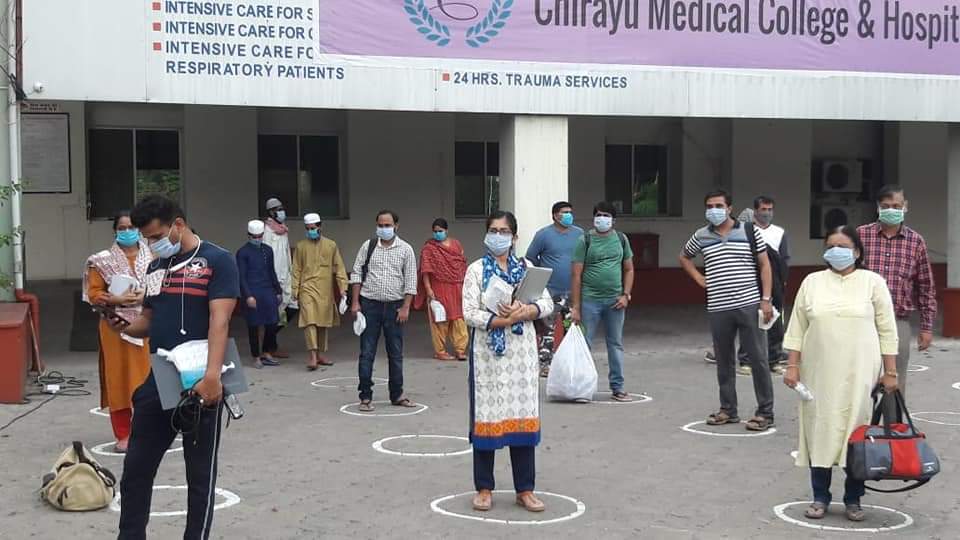
रिपोर्ट में यह कहा गया है कि इस समय सार्वजनिक स्वास्थ्य के ढांचे को मज़बूत करने की ज़रूरत है. याद दिला दें कि सरकारी अस्पतालों में मेडिकल कालेजों में डाक्टरों नर्सों व कर्मचारियों की बेहद कमी है . कई सालों से सरकार अपनी सेवाएँ ठेकेदारों के ज़रिये कम वेतन पर काम करना रही है . सरकार बीमा कंपनियों के ज़रिये बड़े प्राइवेट अस्पतालों को बिज़नेस दे रही है , जो इस संकट में काम नहीं आये . बड़ी फार्मास्यूटिकल कम्पनियों के दबाव में सरकार सिर्फ़ एलोपेथी को बढ़वा देती है. पर जब कुछ नहीं सूझा तब मजबूरी में आयुष मंत्रालय की ओर से रोग प्रतिरोधक क्षमता बथाने के लिए आयुर्वेदिक काढ़ा और जड़ी बूटियों की सलाह दी गयी. मीडिया स्वराज़ ने इससे पहले ही वैद्य के माध्यम से परम्परागत उपचार पर बल दिया था.
https://mediaswaraj.com/industrial_civilisation_destroying_nature_ram_dutt_tripathi/
संयुक्त रिपोर्ट में समस्त मानव समुदाय को भी आगाह किया गया है कि वह प्रकृति की तरफ़ से दी जा रही चेतावनी को समझें और तुरंत प्रकृति के संरक्षण के लिए ठोस और कारगर उपाय अपनाए .इस रिपोर्ट में कहा गया है कि वसुधैव कुटुंबकम के सिद्धांत के अनुसार समस्त मानव समुदाय और जीव जन्तुओं के बीच सामंजस्य स्थापित किया जाए . सभी तरह के जीवों के प्रति आदर की भावना रखी जाए और उनके भी रहन सहन का ख्याल रखा जाए .
याद दिला दें कि चीन समेत तमाम देशों में चौड़ी सड़कों , कारख़ानों और शहरों के लिए बड़े पैमाने पर जंगलों को काटा गया . खेती की ज़मीनें ली गयीं . वहाँ रहने वाले जीव जंतुओं के बेघर कर दिया गये . फिर वे मानव आबादी में घुसे .अंधाधुंध औद्योगीकरण ने जल , जंगल , ज़मीन , वायु आसमान सबको प्रदूषित किया, जो बीमारियों का मूल कारण है .
रिपोर्ट में चेतावनी दी गई है कि यदि इस महामारी के बाद भी है हम लोग नहीं चेते और अपने जीवन शैली और नीतियों विशेष करके स्वास्थ्य की नीतियों में बदलाव नहीं किया तो आगे बहुत बुरे दिन आने वाले हैं और मानव समुदाय को उसकी क़ीमत चुकानी पड़ेगी और इससे भी ज़्यादा ख़तरनाक मंजर मानव समुदाय को देखने पड़ेंगे.
यहाँ यह भी याद दिलाने की ज़रूरत है कि भारत में कोरोना बीमारी ने जनवरी में ही दस्तक दे दी थी और ख़ास करके चीन में बीमारी के मुख्य केंद्र वुहान शहर से जिन लोगों को सरकार विमान द्वारा लाई थी उनमें बीमारी के लक्षण मिले थे .उसके अलावा जो लोग चीन , इटली , योरप , अमेरिका की विमान यात्रा करके लौटे थे वह भी कोरोना वायरस का संक्रमण लेकर लौट रहे थे .आगरा में से बहुत से लोग इटली एक व्यापारिक मेले में शामिल होने गए थे और बीमारी लेकर लौटे . इसी तरह चीन से भी बहुत सारे लोग वुहान से लौटे हैं जिनके वहाँ व्यापारिक या कारोबार के रिश्ते हैं. चीन ने बीमारी के केंद्र वुहान शहर में सख़्ती से लॉक डाउन किया, बाहरी दुनिया से सम्पर्क काट दिया, दूर इलाक़े में अस्थायी अस्पताल में इलाज किया . घर – घर लोगों की जाँच की और सुविधाएँ पहुँचाई , भारत में सरकार ने इस ओर ध्यान नहीं दिया.
.कई लोगों का कहना है कि इसका एक बड़ा कारण अहमदाबाद में अमेरिका के राष्ट्रपति डॉनल्ड ट्रंप की रैली आयोजित करना था उसके अलावा मध्य प्रदेश में सरकार गिरानाथा . विरोधी दलों के नेताओं ने फ़रवरी से ही चेतावनी देनी शुरू कर दी थी . लेकिन सरकार ने अंतरराष्ट्रीय हवाई अड्डों पर समुचित निगरानी की व्यवस्था नहीं की अगर हवाई अड्डे पर ही लोगों को रोक कर उन्हें आस पास के होटलों में रख दिया जाता और उनकी जाँच की जाती तो ये लोग बीमारी को अपने घरों और मोहल्लों में नहीं ले जा पाते .
विदेश से आने वाले ये लोग मोटे तौर पर महानगरों में रहते है और वहाँ आसानी से उनकों उनके जाँच पड़ताल करके क्वारंटाइन किया जा सकता था जो नहीं किया गया .25 मार्च तक सारी गतिविधियां चलती रही सामान्य ढंग से . प्रवासी कामगार इन संक्रमित लोगों के सम्पर्क में आए जो लोग विदेश से लौटे थे .
लॉक डाउन लागू होने पर सभी ने स्वागत किया, सहयोग दिया और ये समझा कि प्रधानमंत्री के वादे के अनुसार 3 हफ़्ते में बीमारी क़ाबू में आ जाएगी . इसलिए थाली घंटे घड़ियाल भी बजाए और उनके निर्देशों का पालन किया .इसके बाद जब लॉकडाउन बढ़ा छोटे- छोटे उद्योग धंधे सब बंद होने लगे और प्रवासी कामगारों को कारखानों से दफ्तरों से या घरों से कार्यमुक्त कर दिया गया , कुछ दिनों में इनके पास खाने पीने का भी पैसा नहीं रहा . मकान मालिकों ने भी किराया न देने पर निकालना शुरू किया . सबसे बड़ी बात कि जिन हालात में ये लोग वहाँ छोटे छोटे कमरों में कई – कई लोग रहते हैं सार्वजनिक नल पर नहाते हैं और सार्वजनिक शौचालयों में लंबी लाइन लगाकर खड़े होते हैं वहाँ शारीरिक दूरी के नियम का पालन संभव नहीं .
ये लोग अपने घर परिवार से बहुत दूर थे इनके माँ बाप बीवी बच्चे गांवों में या छोटे कस्बों में थे , तब इन लोगों ने शहरों में रह रहे है अपने सगे संबंधियों को वापस घर बुलाने पर ज़ोर देना शुरू किया . लेकिन केंद्र सरकार न केवल रेल यातायात , बस और निजी कार का भी यातायात बंद कर दिया .इसकी वजह से लोगों को हज़ारों रुपया किराया देकर ट्रकों में जानवरों की तरह भरकर आने को विवश होना पड़ा . लाखों लोग लोग पैदल , साइकिल आटो रिक्शा से चले .सरकार ने जब पैदल चलने पर रोक लगायी तो बहुत लोग रेल पटरियों के सहारे आने लगे जिसमें औरंगाबाद के दर्दनाक दुर्घटना हो गई है . TV पर अख़बारों में सोशल मीडिया पर इन की तस्वीरें आयी तब भी केंद्र सरकार या रेल मंत्रालय को रहम नहीं आया .
लोग रास्तों में दम तोड़ते रहे . प्रबल जनमत का बहुत दबाव पड़ा तो श्रमिक स्पेशल ट्रेनें चलाने का ऐलान किया गया .उसके नियम भी इतने जटिल कि पहले भेजने वाले राज्य पूरी सूची बनाये , जिन राज्यों में जाना है उत्तर प्रदेश बिहार जैसे वहाँ के DM उसका अनुमोदन करें . राज्य सरकार ट्रेन का पैसा जमा करे उसके बाद प्रवासी कामगार निजी डॉक्टरों से कोरोना मुक्त का सर्टिफ़िकेट बनवाए . तब जाकर उन्हें ट्रेनों में चढ़ने का मौक़ा मिला . रेलों में घोरअव्यवस्था से ट्रेनों में ही क़रीब सौ लोगों ने दम तोड़ दिया . पहली बार ये देखा कि ट्रेनें अपने गंतव्य से बिलकुल विपरीत दिशा में हज़ार किलोमीटर दूर चली गईं .
पाकिस्तान के प्रधानमंत्री ने इमरान ख़ान ने तो एक बयान देकर अपने सरकार की गलती क़बूल कर ली है कि अचानक इतना सख़्त लॉकडाउन नहीं करना चाहिए था .भारत में केंद्र सरकार , रेलवे मंत्रालय या राज्य सरकारों में इतना नैतिक साहस भी नहीं है कि वो अपनी गलती स्वीकार करके जनता से माफ़ी माँगे.
अब भी समय है कि सरकार इस महामारी से निबटने और अर्थव्यवस्था को दुरुस्त करने के लिए साझा मंच तैयार करे और देश में आम सहमति बनाकर काम करे.
https://mediaswaraj.com/national_all_party_forum_consensus_for_national_reconstruction/
संब्ंधित रिपोर्ट सुनने देखने के लिए कृपया YOUTUBE ke mediaswaraj चैनल पर भी जाएँ.
https://www.youtube.com/watch?v=xCm578rxhug
=========================================================================
Joint Report
Indian Public Health Association (IPHA),
Indian Association of Preventive and Social Medicine (IAPSM) &
Indian Association of Epidemiologists (IAE)
Joint COVID-19 Task Force
Second Joint Statement on COVID-19 Pandemic in India –
Public Health Approach for COVID19 Control
May 25, 2020
A Joint Task Force of eminent public health experts of India was constituted by IPHA, and
IAPSM in April 2020 to help the Government of India for containment of COVID-19 pandemic
in the country. Subsequently, Indian Association of Epidemiologists (IAE) also joined the Task
Force.
The terms of reference of the Joint Task Force was to 1) To review and collate the scientific
epidemiological literature pertaining to COVID-19 in India at national, state and district level;
2) To develop consensus amongst the experts regarding COVID-19 disease epidemiology,
trends and develop action plan based on the consensus; 3) To widely disseminate the consensus
statement and action plan with public health experts, health professional associations and other
key stakeholders; 4) To share the consensus statement with the policy makers at highest level at
centre and state.
The members of the IPHA, IAPSM, and IAE Joint COVID-19 Task Force are as follows: (in
alphabetical order)
1. Dr. A. C. Dhariwal, Former Director, NVBDCP & NCDC, and Advisor NVBDCP,
MoHFW, GoI
2. Dr Anil Kumar, President, IAE & Dy DGHS (Deafness), Nirman Bhawan, New Delhi
3. Dr. AM Kadri, Secretary, IAPSM
4. Dr. Chandrakant S. Pandav, Past President IPHA & IAPSM, former Professor & Head,
Centre for Community Medicine (CCM), AIIMS, New Delhi, and President, ICCIDD
5. Dr. D.C.S. Reddy, Former Professor & Head, Community Medicine, IMS, BHU
6. Dr. Farooq Ahmed, Former Director NEIGRIMS, and Pro VC KBN University
7. Dr. Kapil Yadav, Additional Professor, CCM, AIIMS, New Delhi
8. Dr. M. K. Sudarshan, Chief Editor, Indian Journal of Public Health (IJPH)
9. Dr. Puneet Misra, Past President, IAPSM & Professor, CCM, AIIMS, New Delhi
10. Dr. Rajesh Kumar, Former Professor & Head, PGIMER, Chandigarh
11. Dr. Rajib Dasgupta, Professor, Community Health, Jawaharlal Nehru University, New
Delhi
12. Dr. Sanghamitra Ghosh, Secretary General, IPHA, and CMO (SG) Ministry of Defence,
Kolcata
13. Dr. Sanjay K. Rai, National President, IPHA and Professor, CCM, AIIMS, New Delhi
14. Dr. Sanjay Zodpey, President, IAPSM and Vice President-Academics, Public Health
Foundation of India (PHFI), New Delhi
15. Dr. Sanjiv Kumar, Former Executive Director, NHSRC, and Chairman, Indian Academy
of Public Health (IAPH)
16. Dr. Shashi Kant, Past President IAPSM, and Professor & Head, CCM, AIIMS, New Delhi
2
Executive Summary and Action Plan
Background:
Hon’ble Prime Minister (PM) invited national medical professional associations on March 24,
2020 and sought suggestions for prevention and control of COVID-19. President IPHA, and
IAPSM attended the meeting. In the background of these developments, after due internal
deliberations, the first Joint Statement1 was submitted to Hon’ble PM, Hon’ble Union Health
Minister, NITI Aayog, Secretary (HFW), and Secretary (DHR) on 11 April 2020.
However, since then the Joint Task Force reviewed new evidences generated globally and
within country. The Task Force members also interacted with many other public health
professionals working at national, state, and district level. Inputs were also taken from the social
media of various professional associations. This is the second version of the joint statement with
recent evidences.
Situation Analysis: The ongoing COVID-19 pandemic is a public health emergency with grave
implications for the entire world. India as part of the global community has also been adversely
impacted with a catastrophic ‘double burden’: 145,000+ cases and 4,000+ deaths, coupled with a
humanitarian crisis that encompasses an estimated 114 million job losses (91 million daily wage
earners and 17 million salary earners who have been laid off), across 271,000 factories and 65-70
million small and micro enterprises that have come to a halt.
The response of the Government of India after the first case on 30th January, 2020 blunted the
rapid progress of the infection and the nation accepted near-total disruption of all facets of daily
living. Clinical, epidemiological and laboratory knowledge for control of the novel corona virus
indicate that humankind will have to “live with the virus” and operational strategies rapidly
need to recalibrate from containment to mitigation. The emerging evidence unequivocally
indicates thatCOVID-19 worsened the health inequities, and public health measures need to
make that concern central. The global community is collaborating and sharing information to
formulate a comprehensive, effective, efficient and sustainable strategy and plan of action to
control this pandemic. At the same time each country and regions within the country have to
adapt the larger general model to its own specifics. Open and transparent data sharing with
scientists, public health professionals and indeed the public at large, conspicuous by its absence
till date, should be ensured at the earliest. This will strengthen pandemic control measures,
build bottom-up consensus and build an ecosystem of engagement and trust.
India’s nationwide “lockdown” from March 25, 2020 till May 30, 2020 has been one of the most
stringent; and yet COVID cases have increased exponentially through this phase, from 606 cases
on March 25 to 138,845 on May 24. This draconian lockdown is presumably in response to a
modeling exercise from an influential institution which was a ‘worst-case simulation’. The
model had come up with an estimated 2.2 million deaths globally. Subsequent events have
proved that the predictions of this model were way off the mark. Had the Government of India
consulted epidemiologists who had better grasp of disease transmission dynamics compared to
3
modelers, it would have perhaps been better served. From the limited information available in
the public domain, it seems that the government was primarily advised by clinicians and
academic epidemiologists with limited field training and skills. Policy makers apparently relied
overwhelmingly on general administrative bureaucrats. The engagement with expert
technocrats in the areas of epidemiology, public health, preventive medicine and social
scientists was limited. India is paying a heavy price both in terms of humanitarian crisis and
disease spread. The incoherent and often rapidly shifting strategies and policies especially at the
national level are more a reflection of “afterthought” and “catching up” phenomenon on part of
the policy makers rather than a well thought cogent strategy with an epidemiologic basis.
Most COVD-19 infected persons are mostly without symptoms. Even if symptomatic, the
symptoms are mild and not life threatening. Majority of the patients do not require
hospitalization and can be treated at domiciliary level with a modified “enforced social
distancing” imposed on the household. Had the migrant persons been allowed to go home at
the beginning of the epidemic when the disease spread was very low, the current situation
could have been avoided. The returning migrants are now taking infection to each and every
corner of the country; mostly to rural and peri-urban areas, in districts with relatively weak
public health systems (including clinical care) .
It is unrealistic to expect that COVID-19 pandemic can be eliminated at this stage given that
community transmission is already well-established across large sections or sub-populations in
the country. No vaccine or effective treatment is currently available or seems to be available in
near future (there are a few promising candidates though). The expected benefit of this stringent
nationwide lockdown was to spread out the disease over an extended period of time and
effectively plan and manage so that the healthcare delivery system is not overwhelmed. This
seems to have been achieved albeit after 4th lockdown with extraordinary inconvenience and
disruption of the economy and life of the general public. The case fatality rate in India has been
relatively on the lower side, and mostly limited to the high risk groups (elderly population,
those with pre-existing co-morbidities etc.). However, the lockdown cannot be enforced
indefinitely as the mortality attributable to the lockdown itself (primarily because of total
shutdown of routine health services and livelihood disruption of nearly the entire bottom half
of the Indian population) may overtake lives saved due to lockdown mediated slowing of
COVID-19 progression.
Abundant scientific and evidence-based interventions are available to control the pandemic at
state and district levels in India. These measures should be implemented while at the same time
ensuring optimal provisions for the livelihood of the poor and marginalized. Simultaneously,
provision of health care for all, especially children and women and those suffering from chronic
conditions and emergencies requiring medical attention is an urgent imperative.
4
Recommendations:
Representing a very wide community of public health academics, practitioners and researchers
in India we recommend considering the following11point action plan during COVID-19
pandemic:
1. Constitute a panel of inter-disciplinary public health and preventive health experts and
social scientists at central, state and district levels to address both public health and
humanitarian crises.
2. Free sharing of data in public domain and Public Health Commission: All data
including test results should be made available in public domain (unlinked anonymous)
for the research community (clinical, laboratory, public health and social sciences) to
access, analyze and provide real-time context-specific solutions to control the pandemic.
A Public Health Commission with task-specific Working Groups may be urgently
constituted to provide real-time technical inputs to the government. The opaqueness
maintained by the Government of India as well as state governments in the context of
data so far has been a serious impediment to independent research and appropriate
response to the pandemic.
3. Lift lockdown, replace with cluster restrictions: The ongoing nationwide lockdown
needs to be removed and replaced with cluster specified restrictions (based on
epidemiological assessment); reasonable criteria and milestones for control of the current
phase of the pandemic in the country should be set, taking into account that successive
wave of cases is possible. The raison d’etre of the lockdown is health system preparedness;
the government needs to come out with clear monitorable benchmarks to this effect.
4. Resumption of all the routine health services: It is of utmost importance that all routine
health services at all level of (primary, secondary and tertiary) care be immediately
started with due measures to ensure protection of HCWs. Ample evidence has emerged
that the human cost of disruption of routine health services specially for terminally ill
patients, those with life threatening catastrophic health events like myocardial
infarctions, stroke, chronic infectious disease like TB and preventable measures like
immunization have far outweighed the deaths due to COVID-19. The brunt of disruption
of health services may even be higher in days to come.
5. Source reduction measures through increase of public awareness and practice of
preventive measures: The most effective strategy for control of novel corona virus
spread during all stages of transmission is source reduction strategy. Universal use of
face mask (homemade and others), hand hygiene (washing with soap and water and
hand sanitizers) and cough etiquette, should be adopted by all with special focus to high
risk population.
6. Ensure physical distancing with social bonding, avoid social stigma: Physical
distancing norms need to be practiced to slow down the spread of infection. At the same
time enhanced social bonding measures need to be promoted to address mental health
concerns of anxiety and lockdown. Stigma and discrimination in COVID-19 tend to be
associated with specific population groups (such as religious groups or returnee
5
migrants) even though not everyone in those groups is specifically at risk. Stigma can
also occur after a person has been released from COVID-19 quarantine. Governments,
media and local organizations need to be pro-active by making people aware and
treating them with empathy and respect.
7. Sentinel and active surveillance: It is important to conduct extensive surveillance for
Influenza like Illnesses (ILI) through ASHA/ANMs/MPWs, and Severe Acute
Respiratory Illness (SARI) through clinical institutions (including private hospitals), daily
reporting to identify geographic and temporal clustering of cases to trace transmission
foci (hot spots / cluster events). This must be supported by trained epidemiologists from
local medical colleges and public health institutions. In future use of already existing HIV
serological surveillance platform could be a cost-effective way to do the serological
surveillance and also provide an estimate of the burden and trend, needs of vaccine, and
impact of other preventive strategies.
8. Test, track and isolate with marked scaling up of diagnostic facilities: India has
significantly enhanced testing rates though some states continue to lag behind.
Benchmarks based on population norms are essential to keep this key pandemic counter-
measure on track. Some states have high numbers of backlogs; instituting standard
turnaround time is equally crucial. Governments need to support free testing in private
laboratories as well. As the number of (potential) contacts as well as returnee migrant
populations continue to increase rapidly across the country, home quarantine need to be
promoted and protocols followed with active participation and support from frontline
health workers and local communities.
9. Strengthening Intensive Care Capacity: Intensive care is only to be given by the well
trained adequately protected health care providers. Newer evidence is emerging that
symptomatic and even SARI cases can be effectively managed with oxygen and other
supportive measures. Makeshift (fangkang) hospitals are already being established in
Mumbai, Maharashtra, and same may be built in other cities of India to cater to increase
in number of patients during the peak of COVID-19.
10. Optimal PPE for frontline workers: Nosocomial infection of COVD-19 is a serious
challenge affecting safety and morale of health care providers (HCP). This is also
important mode of infection transmission amplification and acceleration once HCP
become “super-spreaders”. Appropriate PPE must be provided to HCP to instill
confidence and alternate teams identified to take care of attrition due to fatigue, exposure
and quarantine. India has now enhanced capacity to produce PPEs and should continue
to ramp up production.
11. Strengthening of public health system/institutions/discipline: The historic and
systematic neglect of public health as a discipline and non-involvement of public health
experts in policy making and strategy formulation has cost the nation enormously
especially in the current pandemic. Rapid scaling up of public health (including medical
care) — both services and research — should be done on a war footing with an allocation
of 5% of GDP to health expenditure at center and state level.
6
We sign out on a positive but cautious note. Evidence based scientific and humanistic policies
will help us in overcoming this calamity with minimal loss to human life, social structures and
economies. Nature has once again reminded us of our tenuous situation in the wider universe.
It is high time that humankind takes note of the warning signals and undertakes midcourse
corrections urgently and now. The “One World One Health” approach should be central in
ensuring optimal harmony amongst all humans and animals of the world based on principle of
“Vasudhaiva Kutumbakam” (The entire world is one family). Being respectful and mindful of all
animate and inanimate beings of this planet is the way forward in the post-COVID-19 world.
Even in the face of the current once in a century humanitarian and health crisis of this
proportion, if we do not sit up and take notice and bring about some fundamental changes to
our life styles and also in policy making specially in health policy making, we are doomed to
face the consequences of same and may see unprecedented human costs in present pandemic
and more worryingly see an encore much sooner again.
============================

